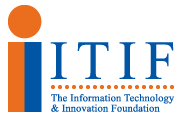
This report by The Information Technology & Innovation Foundation (ITIF) surveys the adoption of self-service technologies delivered via kiosks, the Internet, mobile devices and the telephone and the many benefits to consumers, businesses and the economy. It also explores how advancements in technology such as Telephony (IVR), Internet, Wireless networks and the availability of broadband Internet access, are leading to a growing number of self-service options and opportunities for companies to boost productivity. The report also helps makes the case for the government to embrace self-service technology to deliver services more efficiently and more conveniently to citizens.
A very good document for summer reading!
Executive Summary:
The past decade has witnessed a rapid growth in self service that allows consumers to take on the traditional role of a service worker in the provision of a service. Self service has long existed—think of placing a call by dialing a telephone instead of using a telephone operator or pressing a button in an elevator instead of using an elevator operator—but its importance has grown as advances in information technology (IT) have created many opportunities to leverage self-service technology for large gains in efficiency and convenience. Using computer kiosks, airline travelers check in to their fligths; on the Internet, consumers purchase products without speaking to a sales agent; and using a mobile phone customers check their bank balances and transfer funds. Self-service technology continues to become more efficient and more convenient, and, as a result, increasingly organizations, including businesses, non-profits and governments, are using self-service technology to operate more productively and to better serve their customers.
Download (from the source):
- [download id=”43″ format=”1″ autop=”false”]
Source: http://www.itif.org